Knowledge base

How to choose the right CNC machine for cutting different materials?
How to choose a CNC machine for cutting different materials? Choosing the right CNC (Computer Numerical Control) machine is crucial to ensure precise cutting, high production efficiency and return on investment. The decision on the choice of cutting technology should depend on the type of materials, production requirements and available financial resources. In this article, we present advice to help you choose a CNC cutting machine, taking into account different materials such as metal, plastic, wood or glass.
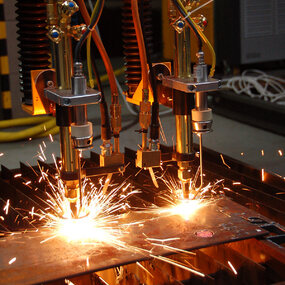
CNC machine operation - who can operate them? How to get the authorizations?
Proper operation of CNC machines requires appropriate qualifications and skills. CNC (Computer Numerical Control) machines are advanced machines that use computer controls to precisely machine materials such as metal, wood and plastics. Modern industry is increasingly using these technologies, making the demand for qualified CNC machine operators ever-increasing. Who can operate them and how to become qualified?

CNC machines - what are they and how do they work?
In today's booming industry, CNC machines are the foundation of modern manufacturing. However, how do CNC machines work and what are they? In this post, we will take an in-depth look at this technology and explain why it is so indispensable in industry.

CNC machine programming - what does it consist of?
CNC (Computer Numerical Control) machine programming is a process in which a specialist creates control instructions for a machine, enabling precise and automated tasks such as cutting, milling, drilling or turning. With modern CNC machines, programming is becoming an indispensable tool in many industries, offering high precision and repeatability. As a manufacturer of CNC machines, we offer not only equipment, but also CNC training courses that allow you to acquire the skills necessary to program and operate these advanced devices.

What parameters determine the quality of laser cutting?
Laser cutting parameters play a key role in achieving high-quality cutting in a variety of industries, from the metal industry to the production of decorative items. With precise control, low material damage and minimal waste, laser cutting is becoming increasingly popular. However, to ensure optimal cutting quality, it is necessary to take into account a number of parameters that affect the efficiency of the process. In this post, we will outline what affects laser cutting quality and what laser cutting settings are most optimal.

CNC technology - what is it and where is it used?
CNC (Computer Numerical Control) technology is a advanced automatic machine control system that enables precision machining of materials such as metal, wood, plastics and many others. CNC technology is widely used in a variety of industries, such as motoring, aviation and the furniture industry. As a CNC machine manufacturer, we offer advanced solutions that improve production efficiency and workmanship.

How to take care of CNC machines? Proper cleaning and maintenance of machine tools
Cleaning CNC machines and their regular maintenance are key activities to maintain high precision and efficient machining. Every CNC machine tool, regardless of its purpose, requires proper lubrication, cleaning and periodic maintenance. Proper maintenance of CNC machines not only extends their life, but also minimizes the risk of breakdowns and unplanned downtime. So how to take care of CNC machines and which components require special attention?
 (Dužy).JPG?w=285&h=285&f=crop)
Cutting metal - how and with what to cut metal?
Metal cutting is one of the basic jobs in many industries, such as sheet metal processing, machinery manufacturing, and construction. Choosing the right metal cutting method depends on many factors, such as the type of material, the thickness of the sheet metal, precision requirements and process efficiency. In this article, we will introduce what to cut metal with and what tools are used for this purpose.
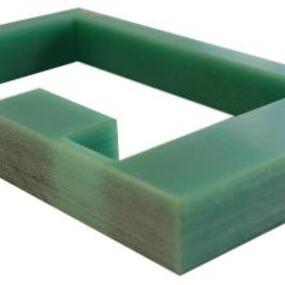
Cutting plastic - what are the tools for cutting plastic?
Plastic cutting is one of the most important processes in plastics processing, especially in industries where accuracy and efficiency are key. Plastics, thanks to their lightness, durability and ability to be easily molded, have become an indispensable material in many industries, from automotive and construction to electronics and medicine. The variety of their properties, from flexible and soft to hard and heat-resistant, makes the choice of appropriate processing methods, such as precision plastic cutting, and the use of advanced technologies extremely important.

Conventional vs CNC machine tools - comparison of CNC and conventional machining
Modern materials processing industry uses both modern technologies and proven methods. The choice between CNC and traditional machining often depends on the specific requirements of the project, cost and expected precision. To better understand the differences between these methods, it is useful to take a look at the key aspects of both solutions, their advantages and disadvantages, and their applications.

Cutting sheet metal
The cutting of sheet metal plays a particularly important role in many different industries. If you are looking for the right cutting systems for cutting different types of sheet metal, you have come to the right place at Eckert Cutting. Modern, state-of-the-art machines are ideal for processing a variety of sheet metal made from different materials. Equipped with modern and user-friendly software and the option of making different settings, the various cutting systems can be individually adjusted to the requirements of the sheets. Rely on first-class cutting quality, a high cutting speed and results that meet your requirements.
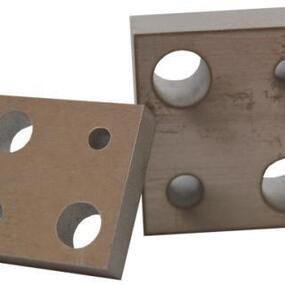
Cutting stainless steel
Stainless steel is a particularly popular material due to its many positive properties. If you would like to cut stainless steel and are looking for a suitable partner for your projects, then Eckert Cutting is the right place for you. We offer you various machines for cutting processes to process your stainless steel workpieces. We attach great importance to precision, user comfort and modern technology.
Over the years, all cutting machines have been continuously revised, technically overhauled and now impress with state-of-the-art technology that guarantees flawless function. Laser cutting, water jet cutting and plasma cutting are all suitable for cutting stainless steel.
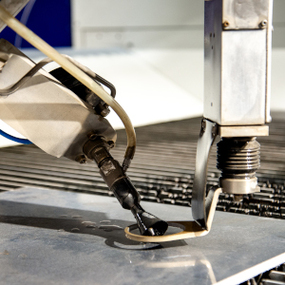
Waterjet machines - the biggest advantages of waterjet cutting technology.
Waterjet is a high-tech CNC waterjet cutting machine that enables precise processing of a wide range of materials - from plastics and food to extremely hard materials, such as metal, and brittle materials, which include glass and ceramic products. One of the main advantages of this technology is the ability to process materials as thick as 250 mm, which is a significant advantage over, for example, laser technology. It is a so-called non-thermal method, using a jet of water at extremely high speed to separate the material.
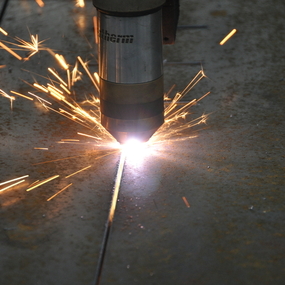
Cutting steel
There are various technologies available for cutting steel workpieces, each of which has different requirements and properties. Depending on the thickness of the material, the type of steel and the desired result, we recommend laser cutting, plasma cutting, oxyfuel cutting or water cutting. All our machines work very effectively, are particularly precise and deliver the desired results. This applies to the production of individual pieces as well as large series in large quantities.
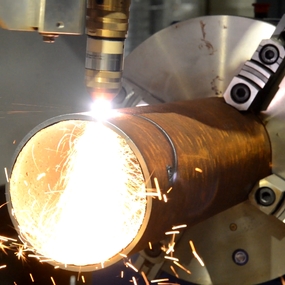
Cutting pipes
Plastic pipes, stainless steel pipes, steel pipes or thick-walled pipes - when it comes to cutting pipes, precision, quality and speed are key. Depending on the respective material, diameter and wall thickness, you will find the right pipe cutting machine for your requirements at Eckert Cutting. At Eckert Cutting, we rely on the latest technology, precise working methods and high repeatability so that we can guarantee our customers perfect tube cutting results.




















